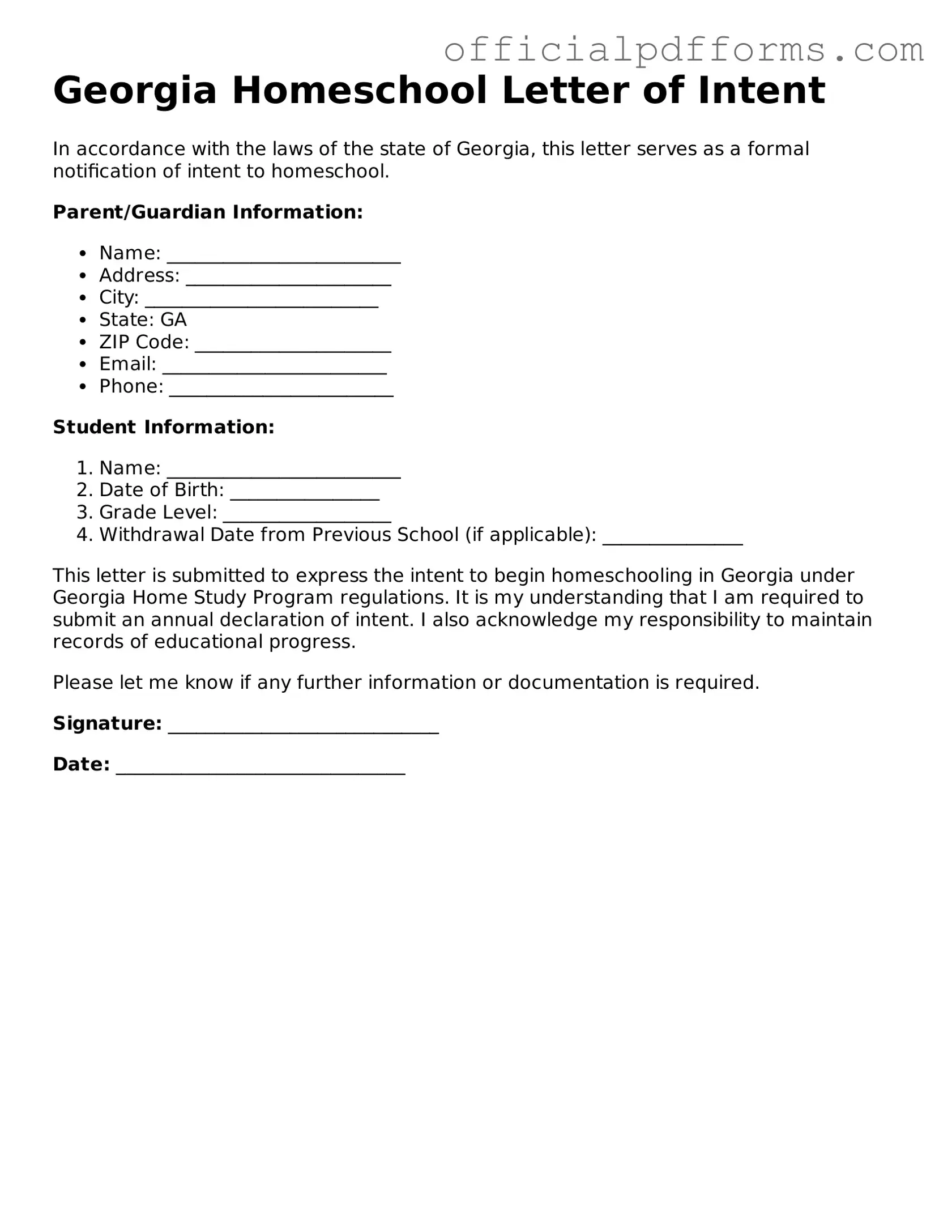What is the Georgia Homeschool Letter of Intent?
The Georgia Homeschool Letter of Intent is a formal document that parents or guardians must submit to the local school district to notify them of their intent to homeschool their children. This letter serves as an official declaration that the family will be providing education outside of the traditional public or private school system.
Who needs to file the Letter of Intent?
Any parent or guardian who wishes to homeschool a child in Georgia must file this letter. This requirement applies to children between the ages of 6 and 16. If you are withdrawing your child from a public or private school to begin homeschooling, it is essential to submit the letter promptly.
When should the Letter of Intent be submitted?
The Letter of Intent should be submitted by the first day of the school year in which you plan to begin homeschooling. If you are withdrawing a child from school mid-year, you should file the letter as soon as possible to ensure compliance with state regulations.
The Letter of Intent should include the following information:
-
The full name of the parent or guardian
-
The address of the homeschooling family
-
The names and ages of the children being homeschooled
-
A statement indicating the family's intent to homeschool
Including this information ensures that the school district has a complete record of your homeschooling intentions.
While there is no mandated format for the Letter of Intent, it is advisable to keep it clear and concise. A simple, typed letter is sufficient. Ensure that all required information is included and that the letter is signed by the parent or guardian.
Where should the Letter of Intent be sent?
The Letter of Intent should be sent to the local school district office where your child would otherwise attend school. Each district may have its own submission process, so it is wise to check their website or contact them directly for specific instructions.
What happens after submitting the Letter of Intent?
Once the Letter of Intent is submitted, the local school district will typically acknowledge receipt of the letter. There is no further action required from the district unless they have specific questions or need additional information. Parents should keep a copy of the letter for their records.
Are there any penalties for not filing the Letter of Intent?
Failure to file the Letter of Intent can result in legal consequences. The state of Georgia requires this notification to ensure that children are receiving an appropriate education. If a family does not file the letter, they may be subject to inquiries from the school district or even potential truancy charges.
Can the Letter of Intent be revoked?
Yes, parents can revoke their Letter of Intent at any time. If you decide to enroll your child in a public or private school after filing the letter, you should inform the school district of your decision to revoke the intent to homeschool. It is good practice to document this communication for your records.
